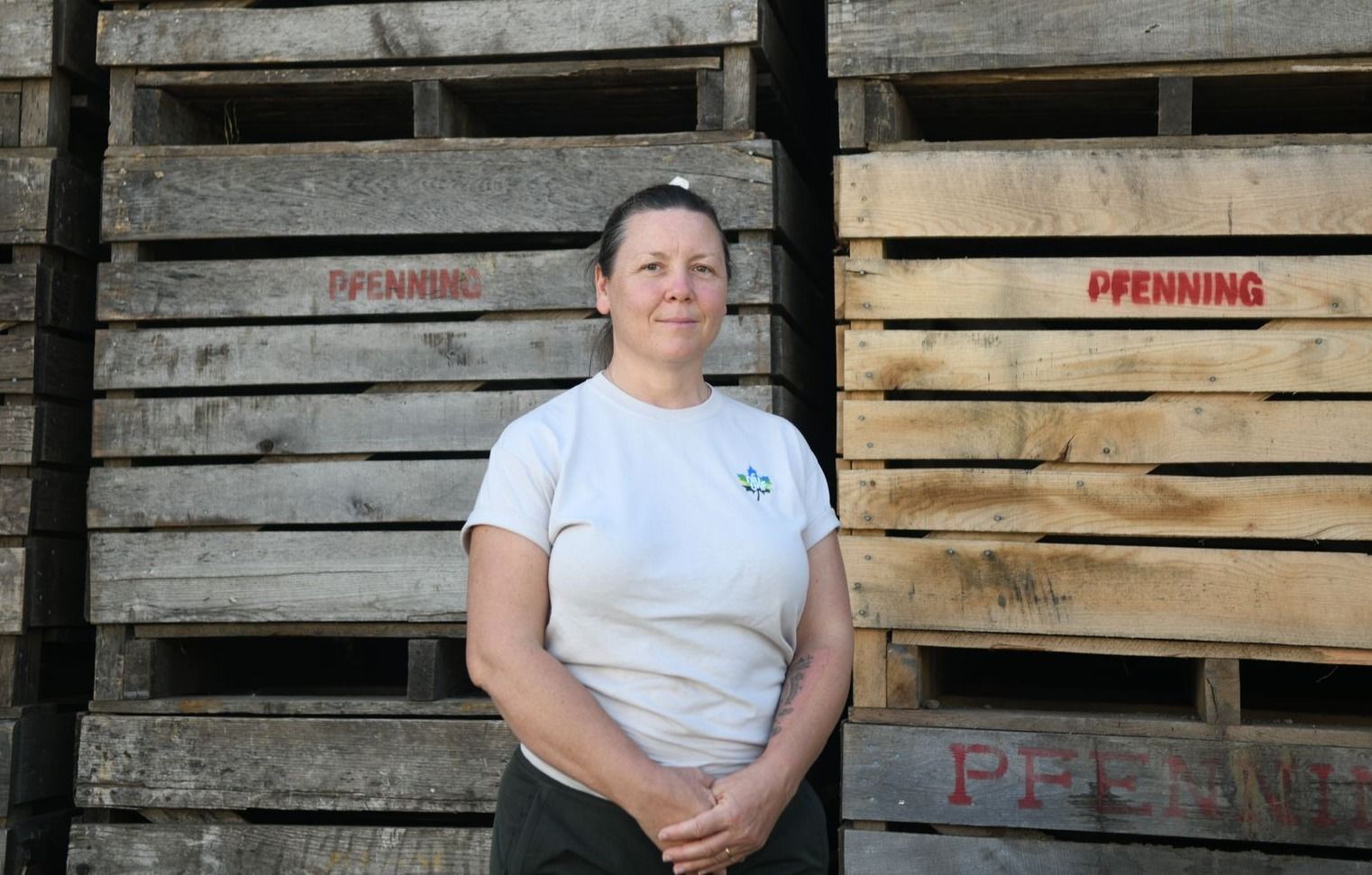Total greenhouse gas emissions from Canadian agriculture equaled the equivalent of 82.6 million tonnes of Carbon in 2021. That’s up 41 per cent since 1990, according to a new report from the National Farmers’ Union (NFU).
NFU last week released the third edition of its carbon emission report for Canada’s agricultural sector, drawing on information from Environment and Climate Change Canada.
The report shows that emissions in the sector are increasing, despite the fact that fewer farmers are farming less land than ever before in Canada.
Jenn Pfenning, the president of the National Farmers’ Union and a local farmer near New Hamburg, says this is because of more intensive use of the land.
“When we look at the total number of acres being farmed, the number of people farming those acres is much smaller than it was 20 years ago, 50 years ago, and almost shockingly dramatic when you look beyond that. But it’s even pretty dramatic within my lifetime, 50 years. It’s really, bigger and bigger acreage, fewer and fewer farmers. And part of that could be seen as a good news story of equipment making it more efficient to do the work required to farm 100 acres or 1,000 acres, and so fewer people are needed to do that work. But when we look at the corresponding rise in emissions, we really have to consider what we’re doing, how we’re doing it, and what the impacts are,” she said.
New in the third edition is a change in the methodology in the way Environment and Climate Change Canada collect and analyzes data that shows an increase in on-farm fuel use since 1990.
“Previous analyses and modelling had led nearly everyone to conclude that fuel use and related emissions had a nearly flat trendline,” said Darrin Qualman, the director of climate crisis policy and action at the NFU.
The report noted that cattle make up the most of the industry’s emissions. The other categories include fertilizer use and fuel use on farms such as diesel for powering tractors, and natural gas use for drying grain and heating homes and barns.
The report also noted that the amount of nitrogen fertilizer applied each year has doubled since 1990, as well as emissions from on-farm diesel use.
The report also showed that carbon sequestration, or the amount of carbon able to be taken from the air and stored in the soil, also increased, averaging 22 megatonnes of carbon dioxide equivalent in recent years.
Although carbon sequestration is increasing, the report did not present carbon as a net amount, meaning, the amount of carbon emitted, minus the amount stored.
Pfenning says this is because carbon sequestration is difficult to measure and extremely variable. The carbon stored via soil sequestration is temporary compared to the release of carbon stored as fossil fuels for millennia that are now being released and driving climate change.
“So we need to do [soil carbon sequestration]. This does not discount the beneficial effect of it, but when we’re talking about gross emissions that are changing our environment, it’s much more driven by the release of very, very long-stored-carbon,” she said.
For Qualman, the most important take-away from the report is a graph that shows the breakdown of all emissions sources in the country’s agricultural sector at a glance.
“It shows, in one place and with significant detail, the many sources of emissions from Canadian agriculture. This ‘at a glance’ information is not available anywhere else. Every farmer and policymaker and every citizen interested in GHG emissions from our farms and food systems should take a few minutes to look at that graph,” he said.
Although the report concludes that emissions are increasing, Pfenning is still optimistic. She says that the report is important because it enables farmers, industry leaders and the government to make informed decisions, adding that’s especially important for younger people who want to enter farming.
“I see hope in having data that we can actually use to make informed decisions and to blow away fallacies. Because I think that too many times what happens is we want to do the right thing and we want to do something good for the environment or whatever, and if we don’t have accurate, really fulsome data, we can easily make decisions that are cross purposes with what we want to accomplish,” she said.
She also finds hope in the young farmers who see a future in the industry and are taking action.
“My favourite part of this job is just getting to talk with so many other farmers and compare notes and share ideas. I see young farmers getting into farming, who see a future for themselves in it, who are doing it as a way to take personal action on climate anxiety, on the concerns they have about how food is grown and what the future might hold. To see a next generation willing to get into this industry and try to address some of these challenges, that is incredibly hopeful.”
Pfenning says that a major solution needed to lower emissions in the industry is to increase government-funded research at all levels.
“We used to have extension services across the country that were offering farmers advice that didn’t come with a price tag, that didn’t come with a sales pitch,” she said, noting that today much of the new knowledge offered to farmers comes from industry.
“That advice and that part of the system certainly is valuable, but it needs to be not the only source,” she said. “We as farmers need to have advice that isn’t tied to a corporation, that isn’t tied to somebody’s personal or corporate economic interest.
“The government has been investing, but we need to do more of it and we need to do it at every level of government. We need to understand that unless we have a comprehensive plan to address this issue and support farming into what’s coming and what has already started, we will not be able to successfully navigate it. We simply won’t.”







